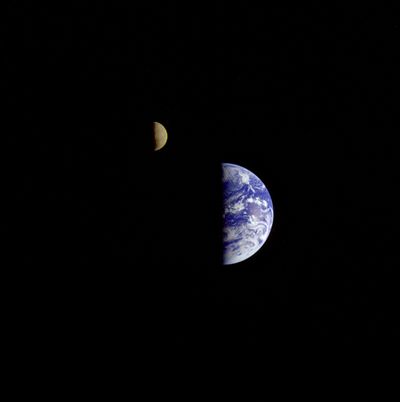What is the point of a leap year? Local physicist explains the special day’s astronomical importance

It’s leap day. Thousands of Americans will celebrate their birthdays today for the first time in four years – and their special day won’t come again until 2028.
Though a calendar year is 365 days, an astronomical year – the amount of time it takes for the Earth to make one revolution around the sun – is about 365 and a quarter days.
“Every four years we have an extra day,” said Nicole Moore, a physics professor at Gonzaga University. On the Gregorian calendar, that day is Feb. 29.
If that extra day isn’t accounted for periodically, Moore said, “over time the weather in February would change.” Eventually, that could mean a snowy Fourth of July and an unseasonably warm Christmas.
We have cultural expectations about what each month’s weather should look like, Moore said.
That’s how the leap year started, Moore said.
“They noticed over time that their season and their festivities weren’t matching up anymore.”
Still, the leap year fix isn’t perfect. An astronomical year isn’t exactly 365.25 days, its more like 365.2442 days.
“That means we’re putting back slightly too many days,” Moore said.
To account for the overcorrection, some would-be leap years are skipped.
Most years divisible by four, like 2024 and 2016, are leap years, Moore said. But if the year is a new century, there are a few more boxes it must check.
For a century to be a leap year, it must be exactly divisible by 400. That’s why the year 2000 was a leap year but 1900 was not. 2400 will be a leap year, but 2100 will not.
“We’re basically trying to make it so that our calendar stays fixed relative to our orbit around the sun to keep our festivals and holidays at the right time of year,” Moore said.
Leap day has had some memorable happenings in Spokane over the years.
A 1940 Spokesman-Review article announced justices would marry the first couple to arrive at the courthouse on leap day free of charge.
In 1948, the city welcomed 18 leap day babies, the Spokesman reported, compared with five in 1952 and six in 1968.
“Leap Day Won’t Hurt City,” the Spokane Daily Chronicle headlined in 1968, amid rumors that “the city had not ‘budgeted’ for the extra day.” City employees would, in fact, get paid for Feb. 29, then-city finance director John Williamson said.
“They get paid for every day they’re on the job, no more, no less,” he said.
In 1976, the Chronicle reported on a Spokane girl’s leap day birthday.
“In these inflationary times, she needs only four candles on her cake – not 16,” the article read.
Several Spokesman-Review stories gave nods to the Irish tradition of women proposing to men on leap day.
“At the ready, girls!” reads a 1968 story. “The day is almost upon us, the one day in four years when you can propose marriage to the man of your choice and still maintain your dignity.”
“Spokane’s eligible men not averse to being chosen by a daring lady,” a 1976 headline read. “Men beware: Leap Year means that sexual roles get reversed,” reads another from 1992.
In a 1976 S-R story, Spokane women questioned the practice.
“I think Leap Year meant more years ago and that nowadays the tradition is gone. Everything is more of a two-way proposition,” said Thea Carter, a Spokane Community College student.
Sherry Kropp, another SCC student, agreed.
“It’s just like any other year. I noticed it was Leap Year, but it hasn’t changed any of my actions. If a girl is going to ask a guy out, she’s going to do it whether it’s Leap Year or not.”
“It really doesn’t take Leap Year for a woman to invite a relationship with a man,” said Dorothy Hamilton, then-chair of the Spokane chapter of the National Organization for Women.